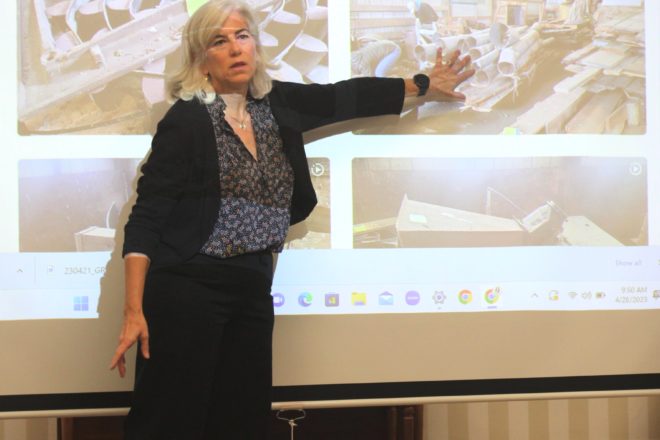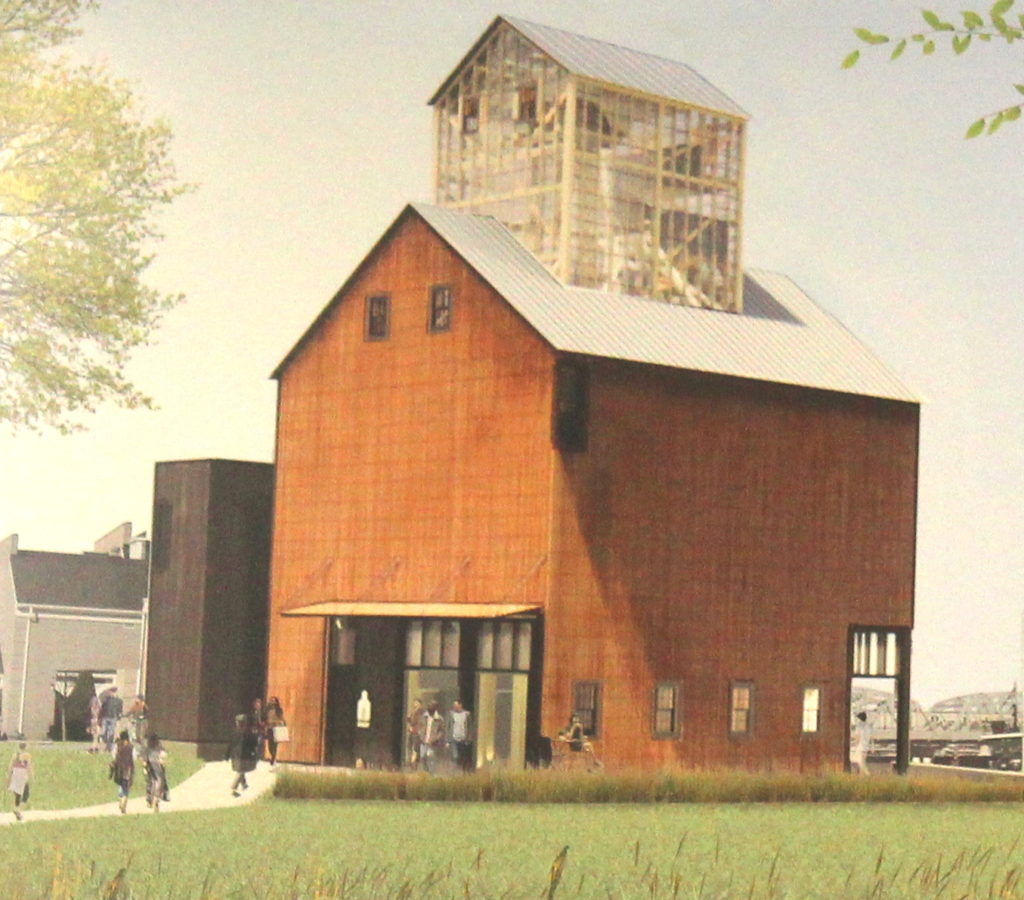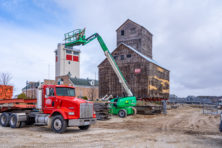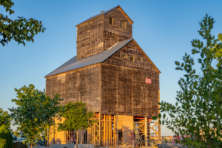Project Plans Discussed to Finish Door County Granary
- Share
- Tweet
- Pin
- Share

The Sturgeon Bay Historical Society Foundation (SBHSF) held an informational meeting April 26 in the Jane Greene Room of the Door County Library’s Sturgeon Bay branch to discuss the Door County Granary restoration project that’s taking place on the city’s West Waterfront.
The meeting was part of the application process for the SBHSF to receive $3.3 million earmarked in congressionally directed spending to restore the 1901 Teweles and Brandeis grain elevator through the U.S. Department of Agriculture’s (USDA) Rural Development.
Granary project manager Nicole Matson said the SBHSF “pivoted in our construction plans” with the $3.3 million being available to combine work on the ground level and upper levels of the building.
“We’ve added work to the project, and so that’s added a little bit of time to our project right now,” she said. “But in the long run, to complete the whole entire structure and add access to the upper levels, we will be able to complete the construction phase of the Granary project with this $3.3 million.”
Matson said the SBHSF has been working with its construction manager, Greenfire – as well as LA DALLMAN Architects and Beane Engineering – to complete the design for the upper levels, get them permitted and begin construction to complete the Granary’s restoration and rehabilitation.
“As we’re doing that construction planning, we’re also working with the USDA to complete this application process, including this meeting that we’re holding [April 26],” Matson said. “Our construction schedule right now looks like we could start construction in September, but depending on how state reviews happen, it could be sooner, and we’re hoping that [$3.3 million in federal] funding will be in place as soon as we’re able to start construction.”
Matson said about $2.5 million has been invested in the Granary project so far to pay for items such as site preparation, methane mitigation plans, putting the new foundation in place with the pilings, and putting the building back together with new shear walls and the original columns.
“The next $3.3 million that we’re applying to receive through the USDA will complete the rest of the project,” she said. “We could not have been here without our donors. They’re our No. 1 supporters, and we’re so happy they had faith in this project and what this will be for the Sturgeon Bay community and such an asset on the West Waterfront.”
Matson said the public will have full access to the Granary building once it’s completed, and the addition on its side will include a catering kitchen and public restrooms.
“The Door County Granary project is going to be open as a public space and a living museum,” she said. “The building will be open to the public three seasons out of the year. It will have free public access during a specific time frame, and then [to] sustain the building for operating and maintenance costs, we’ll offer private rentals, and they’ll be able to use this space, including the outdoor patio space, where we can put tents and things like that.”

Historic Interpretation
SBHSF board member Beth Renstrom said the Granary project’s purpose includes letting people know how a grain elevator worked and why it was important to the community.
“We also want to document the agricultural history of Door County,” she said.
The Granary building, which previously had its first floor demolished, reached a milestone in its restoration last August when it was lowered onto its refurbished column legs.
Renstrom said a lot of the material taken from the building when it was partially demolished has been saved and stored, and a summer intern will help inventory and identify those items.
“We have a lot of things,” she said. “We’ve got the old wheels, we got some old lighting, and so currently, this is in storage and things we are going to be going through.”
Renstrom said the SBHSF wants the restoration to be historically accurate, whether using old items or something similar.
“We’ll go through and determine what are the historical artifacts for the museum – what would we use as interpretive pieces inside the museum – and most of this will be on the upper floors because we want to keep that [downstairs] floor open for events, for community participation,” she said.
Renstrom said historical artifacts will also be identified to use as part of the construction.
“It might not be interpreted as part of the museum, but we want to use as much of the original material as possible,” she said.
Development Agreement
The SBHSF entered into a development agreement with the City of Sturgeon Bay to restore the Granary on the West Waterfront. The last extension on that agreement to “substantially complete” the project went through the end of April 2023, and the SBHSF has been in talks with city officials for another extension.
“We have to extend the date, but that has not been decided on what the date will be yet,” Matson said.





